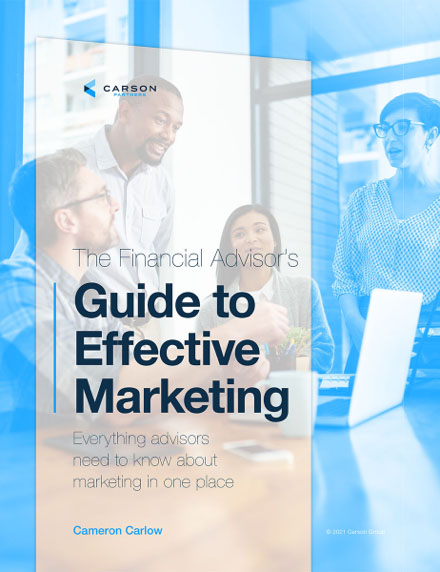There’s no shortage of financial advisor blogs these days. It seems like every advisor with a website has a blog. But not every advisor is using their blog wisely. As we’ve said before, content marketing for financial advisors is a tough egg to crack, but it doesn’t have to be that way. With a little bit of thought and time, you can rise above these three types of under-performing advisor bloggers.
The Firefighter
The first type of advisor sees the value of content marketing, but never makes time for it – until, of course, something happens in the market and clients start contacting him with questions and concerns. Stuck in a tight spot, the Firefighter forces himself to sit down and write a response to the current markets to help ease his clients’ minds. Once he has put out this “fire,” he goes back to his daily routine until the next market event.
On the positive side, the Firefighter understands that content marketing is useful and implements it for a particular purpose, but it’s just to get him out of a bind. Once the latest market madness is behind him, the amazing response he wrote gets put on the virtual “shelf” – forgotten and never to be used again. The biggest shortfall of this approach is that it doesn’t even begin to address the needs of prospective clients. All the Firefighter is doing is maintaining his current client book.
The Wham Bam
The Wham Bam takes a one-off approach to content marketing. She approaches content marketing like a child with a hammer – she’s seen other people use it well and can go through the motions, but she’s not getting the most out of it because she doesn’t really understand how to use it.
The WB advisor says, “Josh Brown (or any other big name in the digital realm) publishes every day, so I should, too. Look at where it’s gotten him.” But she doesn’t think about the strategy behind Josh Brown’s success. So much of Josh’s rise to fame has to do with his personality and “Who needs sleep?” commitment to providing up-to-the-minute commentary on everything. Few can keep up with such a pace.
With little to no direction, the WB advisor produces a “series” of one-off blog posts that only really qualifies as a series because of their sequential production order. Otherwise, the blogs are the result of whatever is in the advisor’s head at the time of writing.
Here is a typical publication schedule for the WB advisor:
- Monday – Kick out 500 words on reverse mortgages because a client asked her about them the other day.
- Tuesday – Write 1,400 words about why she became an advisor. The article ends up being more about her relationship with her father than anything and fails to include any practical takeaways for the reader.
- Thursday – Publish an 800-word piece on Social Security claiming strategies because she couldn’t think of anything else to write about and that’s an article she could write in her sleep.
- Friday – Throw together 400 words on what Apple’s latest move means for investors.
Notice how the length is all over the place. We see this often from all types of advisors – registered investment advisors, brokers, what have you. Either they write 200 words on a subject and call it done (you can’t even begin to answer a question in 200 words), or they write 2,000 words on something that could have been covered in 1,000, ensuring that readers get bored or miss the point entirely.
Also notice how there’s no common thread tying the articles together. A little bit of financial planning, a little bit of investing, a little bit of content for retirees, a little bit for young professionals… Who is the audience here? So while the WB advisor at least understands the value of content marketing enough to make time for it, she still comes up short.
The Non-Starter
This is the advisor who never even leaves the starting block. The Non-Starter either doesn’t believe content marketing can move the needle, doesn’t know where to start or doesn’t have any time for it. He might invest heavily in other forms of marketing like hosting events or building relationships with COIs, or maybe he is so buried with work from his current client book that he can’t find time to market his business at all.
The Non-Starter is like a restaurant owner with a door on the back the building and no door on the front. People tell him he could get more customers if he had a door on both sides, but he either can’t find the time to build the door or doesn’t think it would make a difference.
Why can’t he see what his customers see – that if he would just make the time to build the door, he could increase the accessibility, traffic flow and visibility of his restaurant? The Non-Starter has heard the stats about blogging, and he keeps saying, “I need to get around to that,” but he never does. If he would, he could see some pretty amazing benefits:
- Companies that blog get 97 percent more links to their site.
- Blogging increases chances of ranking highly on internet searches by 434 percent.
- Companies that blog get twice as much traffic from email marketing.
- Content marketing costs 62 percent less than traditional marketing and generates about three times as many leads.
So what are all of these advisors missing that could make you better than all of them if you could master it?
How to Be the Best Blogging Advisor You Can Be
Strategy. I can feel you rolling your eyes as you read this because the answer can’t be that obvious and simple, can it? But a lack of content strategy is one of the biggest problems I see advisors dealing with today: directionless content, slapdash publishing schedules and – as a result – unengaged readers. What does a content strategy look like? It begins with personas – defined profiles of your ideal clients.
If your firm doesn’t already have personas, our guide to the 11 most common investor personas is a great place to start.
Once you have your personas in place, you determine what kind of content those personas would be interested in, what unique perspective you can bring to those topics, and then you build out a realistic editorial calendar.
One of my favorite content strategies is called topic clusters. In it, you pick five to seven content “pillars,” or cornerstone pieces of content. So if you work primarily with business owners, a few of your pillars might be succession planning, tax optimization for businesses and 401(k) services. You would write a large article for each pillar that covers it at a high level. Then you write several additional articles that dive deep into the finer points of each pillar topic.
That’s just one way to approach your content strategy and build an editorial calendar with real purpose. Whatever way you choose to proceed with your advisor content marketing, make sure you move forward with a strategy in mind so you’re not wasting your time or leaving opportunities on the table.



